
Poland facts and history
in brief
Poznan
Excerpted from Wikipedia, the free encyclopedia.
Poznan (Latin: Posnania, German: Posen) is a
city in west-central Poland with over 578,000 inhabitants
(1999).
Located by the Warta River, it is one of the oldest
Polish cities, an important historical center and the
capital of Greater Poland, the cradle of the Polish
state, and Poland's capital in the mid-tenth century
during the early Piast dynasty.
Poznan's impressive cathedral is the earliest church
in the country, containing the tombs of the first Polish
rulers: Duke Mieszko I, King Boleslaus the Brave, King
Mieszko II, Duke Casimir I the Restorer, Duke Przemysl
I and King Przemysl II.
Today the city is a vibrant center for trade, industry,
and education.
Poznan is Poland's 5th largest city and 4th biggest
industrial center.
It is also the administrative capital of the Greater
Poland Voivodship. Voivodship: Greater Poland
Municipal government: Rada miasta Poznania
Mayor: Ryszard Grobelny (2005)
Area: 261,3 km˛
Population: 578 900 (2002)
- density: 2215/km˛
Founded: 8th century
- City rights: 1253
Area code: +48 61
Car plates: PO
Twin towns Assen, Brno, Hannover, Jyväskylä, Kharkiv,
Nablus, Nottinghamshire, Pozuelo de Alarcón, Rennes,
Shenzhen, Toledo
Municipal Website: (http://www.city.poznan.pl/)
Name of the city Often spelled Poznan, in English,
without the special characters, in Polish language,
it is also referred to as Stoleczne Miasto Poznan (name
used on special occasions), German Posen (Haupt- und
Residenzstadt Posen between 20 August 1910 and 28 November
1918), Latin: Posnania, civitas Posnaniensis.
Earliest surviving reference to the city were by Thietmar
in his chronicles: episcopus Poznaniensis ("Bishop of
Poznan", 970) and ab urbe Poznani ("by" or "from the
city Poznan", 1005).
Early spellings include: Posna and Posnan.
The name probably comes from a personal name Poznan
and means the Poznan's town.
It is also possible the name comes directly from the
verb poznac which means "to know, to recognize".
Local government districts of Poznan The Poznan
metropolitan area, consisting of the autonomous towns
of Poznan, Ostrów, Ostrówek, Srodka, Chwaliszewo, Lacina,
was integrated into one city in 1793-1800.
The rapidly growing city annexed the neighboring villages
of Grunwald, Lazarz, Górczyn, Jezyce, Wilda, Winogrady
in 1900, and Piatkowo and Rataje in later years. Today,
Poznan is divided into five districts, which are further
divided onto several dozens of neighborhoods.
The districts are: Stare Miasto, Nowe Miasto,
Jezyce, Grunwald, Wilda
Culture
The annual Malta Theater festival is probably the most
characteristic cultural event of the city.
Henryk Wieniawski Violin Festival is held every 5 years.
Annual classical music festival is held in the city,
on which the Basel Boys Choir took part several times.
History
Poznan has played many roles in the history of Poland.
It is one of Poland's oldest cities and a significant
historical center.
It was the capital of Greater Poland, the cradle of
the Polish state, and Poland's capital in the mid-tenth
century during the early Piast dynasty.
Poznan's impressive cathedral is the oldest church in
the country, containing the tombs of the first Polish
rulers, Duke Mieszko I and King Boleslaus the Brave.
Poznan was the capital city of the Greater Poland region
and one of the biggest Polish cities.
Lubranski Academy, the second Polish university (not
a "full" university, in fact, as science students had
to go to Cracow) was established in 1519.
Poznan was the capital of the Greater Poland area when
it came under control of Prussia in 1793, its administrative
area renamed to South Prussia.
The area was liberated by the armies of Napoleon and
by local Polish resistance fighters, and was part of
the Duchy of Warsaw from 1807 to 1815.
Poznan was capital of the Poznan department.
Following the defeat of Napoleon, Greater Poland was
again under Prussian jurisdiction, as the capital of
the autonomous Grand Duchy of Poznan.
From the time of the Revolutions in the mid 1800s, it
was an official Prussian province (see Province of Posen),
as well as a part of the German Empire after the unification
of German states in 1871 (but it was outside of German
Confederation).
As an effect of the Great Poland Uprising (1918-1919),
the area was restored to Poland and made the capital
of Poznan Voivodship.
During World War II Poznan suffered the Nazi occupation
and repressions.
After the war the city has been capital of the surrounding
area through administrative district boundary changes
in 1957, 1975 and 1999, currently administrating Greater
Poland Voivodship, one of 16 provinces in the country.
Education
Poznan is home to few state-owned universities and a
number of smaller, mostly private-run colleges and institutions
of elementary & higher education.
Adam Mickiewicz University (abbreviated UAM) is one
of the most influential and biggest universities in
Poland.
Economy
Poznan has been an important center of trade since the
Middle Ages.
Starting in the 19th century, local heavy industry began
to grow.
Several major factories were built, including the steel
mill and railway factory of Hipolit Cegielski.
Today Poznan is one of the major centers of trade with
Germany.
Many Western-European companies started their Polish
branches in Poznan, or in the nearby localities of Tarnowo
Podgórne and Swarzedz.
Municipal politics
Since 1989 (the end of the communist era), Poznan municipality
and metro area have invested heavily in infrastructure,
especially transportation and improved public administration.
This has effected in a massive investment from foreign
companies in Poznan itself, as well as in communities
west and south of Poznan (namely, Kornik and Tarnowo
Podgorne).
Investment into transportation was mostly in the public
transport area.
Limiting car access to the city center, building new
tram lines (inc. Poznanski Szybki Tramwaj) and investing
in new rolling stock (such as modern Combino trams by
Siemens and Solaris low-floor buses) actually increased
ridership, including present development of a Karlsruhe-style
light rail system for commuters.
External links:

This page was retrieved and condensed from
(http://en.wikipedia.org/wiki/Poznan) in July, 2005
All text is available under the terms of the GNU Free
Documentation License.

Hui Chin and I arrived in Poznan the morning after
the death of Pope John Paul II., in 2005.
R.I.P.
It was a very sombering experience.
The people of Poznan, the people of Poland
were grieving for their "Papa", probably
somewhat more than the rest of the world,
especially Catholics were mourning the passing
of their Pope.
R.I.P. and God Bless You - Pope John Paul II.

Some of my photos of Poznan.
You can click on
these photos for an enlargement
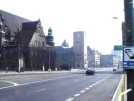 |
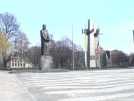 |
 |
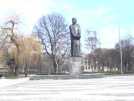 |
| Poznan |
Poznan |
Poznan |
Poznan |
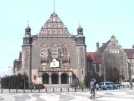 |
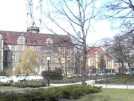 |
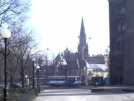 |
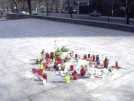 |
| Poznan |
Poznan |
Poznan |
Poznan |
 |
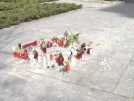 |
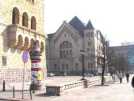 |
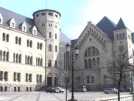 |
| Poznan |
Poznan |
Poznan |
Poznan |
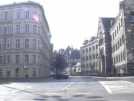 |
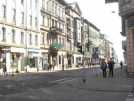 |
 |
 |
| Poznan |
Poznan |
Poznan |
Poznan |
 |
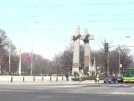 |
| Poznan |
Poznan |
Poznan buses
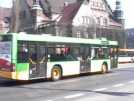 |
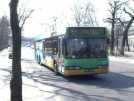 |
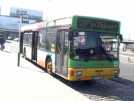 |
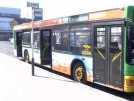 |
| Poznan buses |
Poznan buses |
Poznan buses |
Poznan buses |
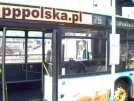 |
| Poznan buses |
Poznan trams
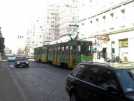 |
 |
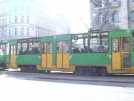 |
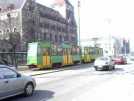 |
| Poznan trams |
Poznan trams |
Poznan trams |
Poznan trams |
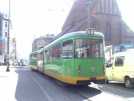 |
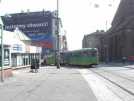 |
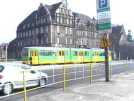 |
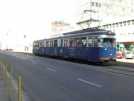 |
| Poznan trams |
Poznan trams |
Poznan trams |
Poznan trams |
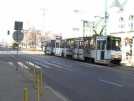 |
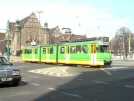 |
| Poznan trams |
Poznan trams |
Poznan trains
 |
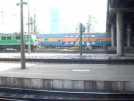 |
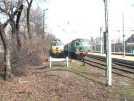 |
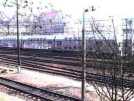 |
| Poznan trains |
Poznan trains |
Poznan trains |
Poznan trains |
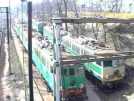 |
 |
| Poznan trains |
Poznan trains |

Site
Index
Back to Top
Photos Index
Thanks for coming, I hope you
have enjoyed it, will recommend
it to your friends, and will come
back later to see my site developing
and expanding.
I'm trying to make my pages
enjoyable and trouble free for everyone,
please let me know of any mistakes
or trouble with links, so I can
fix any problem as soon as possible.
These pages are best viewed with monitor
resolution set at 640x480 and kept simple
on purpose so everyone can enjoy them
across all media and platforms.
Thank you.
You can e-mail me at
Webmaster

|